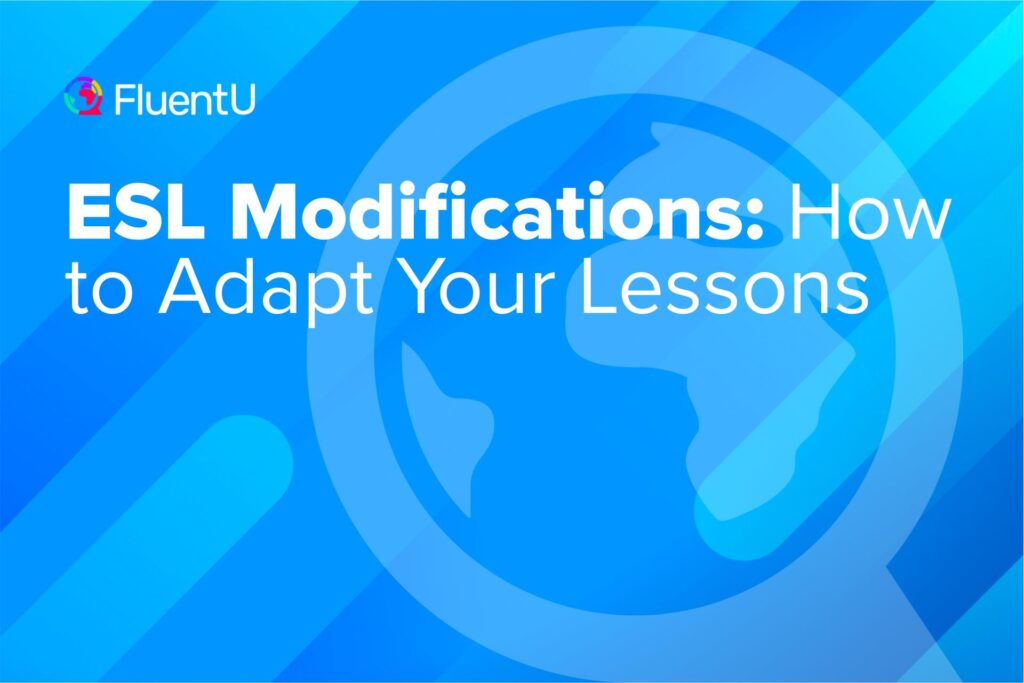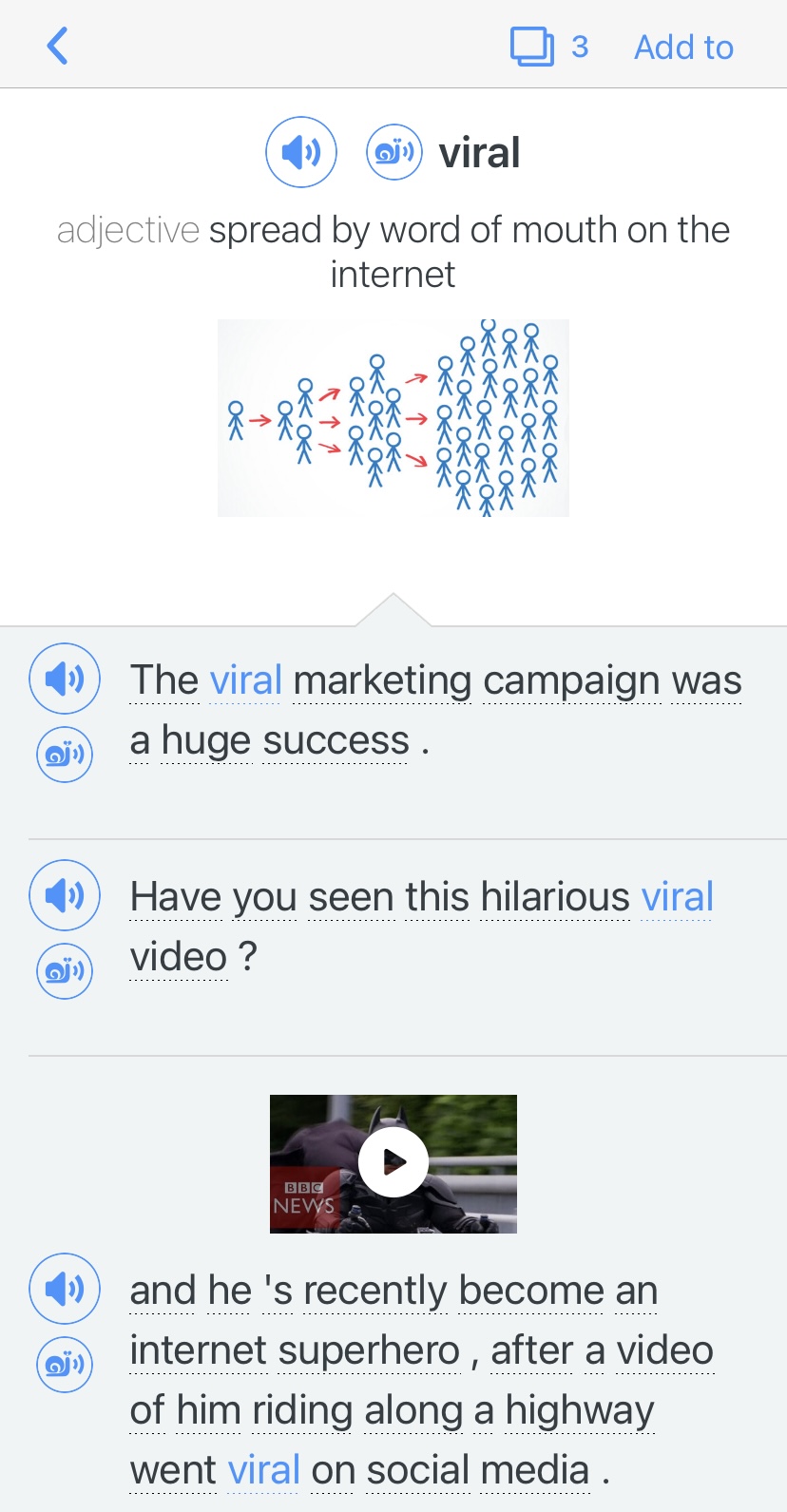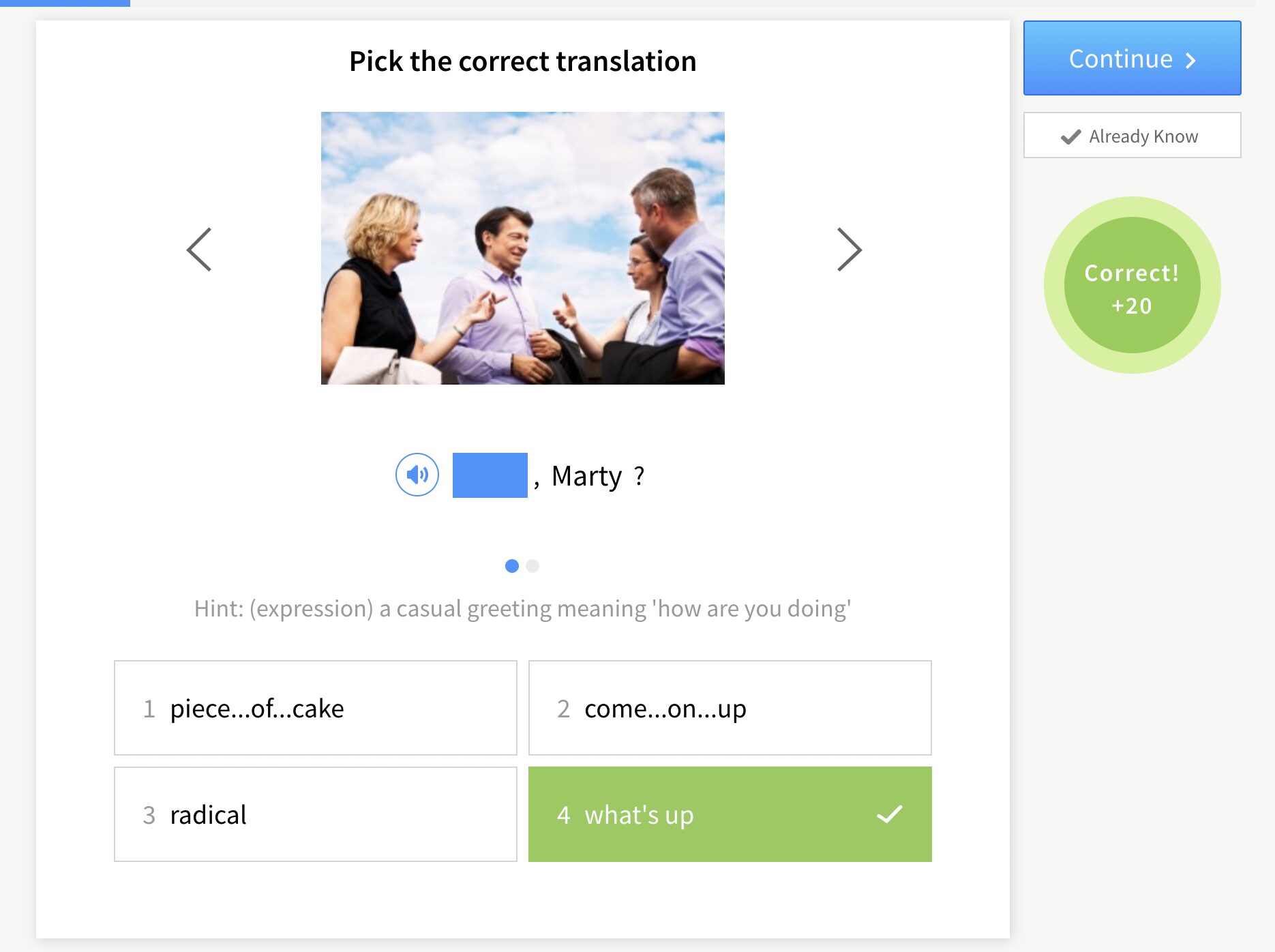Contents
- 1. Provide Alternatives to Correct Responses
- 2. Pass Out Advance Notes to Prepare Students for Challenging Material
- 3. Give Students Extended Time When Necessary
- 4. Practice Teacher Modeling in Class
- 5. Simplify Written and Verbal Instructions
- 6. Take Frequent Breaks During Classtime
- 7. Let Students Use Online Dictionaries to Learn Unknown Words
- The Importance of Implementing Modifications for ELLs
- Using Content Modifications When Necessary
- And One More Thing…
ESL Modifications: How to Adapt Your Lessons

As ESL teachers, we stay up late researching strategies to motivate our students. We constantly seek new ways to liven up our ESL lessons and explore tools to meet the needs of various learning styles. And on top of that, we have to ensure we’re supporting our students 100%.
But this only happens if we implement the correct modifications and accommodations in the classroom. Let’s look at seven highly effective ESL modifications for ELLs (English Language Learners).
Download: This blog post is available as a convenient and portable PDF that you can take anywhere. Click here to get a copy. (Download)
1. Provide Alternatives to Correct Responses
When assessing your ESL students, be sure that you’re clear on exactly what it is that you want them to demonstrate.
Then, think of creative ways they can do so.
For example, a teacher assessing students’ understanding of the causes of the Revolutionary War may have required that students write responses to several questions or prompts.
But if you’re not actually assessing their writing skills, you can find alternate ways for the students to respond.
They can draw pictures with short captions or even speak their responses into a recorder instead of providing a written response.
This way, you’re giving them a chance to communicate their knowledge in a way that circumvents the language and/or writing barrier.
2. Pass Out Advance Notes to Prepare Students for Challenging Material
Just thinking about the advanced French class I took in college makes my head spin to this day.
The instructor spoke in French the entire time. Although I had a decent grasp of speaking and understanding French, keeping up with everything covered was still challenging.
Our students face a similar problem in many of our classes.
One way that we can make things easier is by preparing and distributing advance notes. This allows ELLs to preview what will be taught and, in turn, helps them comprehend the material better.
If your students are required to take notes, your ELLs can use your advance notes and make small additions as necessary.
This decreases the amount of writing required, allowing them to slow down and make sense of what’s being said. It’s also a huge confidence booster proven to increase student performance.
3. Give Students Extended Time When Necessary
Response time for ELLs is significantly longer than for students proficient in English.
Given this, we know that ELLs may require more time to process and communicate assessment information.
To support your students in this area, give them additional time on tests to help.
Extra time will also help to decrease anxiety, which often has a significant impact on test performance.
4. Practice Teacher Modeling in Class
As ESL teachers, we’re always thinking of ways to reduce Teacher Talking Time (TTT).
One great way to do this is to focus on ways to communicate non-verbally.
Modeling and using gestures to aid in understanding can be a very effective accommodation for ELLs.
Make sure you’re thoughtful about what you’ll model and how you’ll do it beforehand. Also, make sure that you’re not only modeling during instruction but also modeling directions.
Let’s say you’ll tell your students they need to get folders from their backpacks.
Place your backpack on your desk, find a place to sit and support your ELLs by modeling each step as you say it.
You can point to a desk when you ask them to place their folders on their desks. You can also pick up a folder and point to your backpack when you ask them to do the first step.
The key is to keep your actions clear and straightforward. Too much moving around can distract students from listening to what you’re saying.
5. Simplify Written and Verbal Instructions
Whether you’re giving instructions verbally or textually, you should simplify them as much as possible for students with LEP (Limited English Proficiency).
You can do this easily by taking out extra words or turning complex sentences into simple ones.
Consider these directions:
Carefully read each sentence below and determine its subject and predicate. Then, underline the subject once and the predicate twice.
Compare those directions to this simpler version:
Read each sentence. Put one line under the subject. Put two lines under the predicate.
These simple changes require minimal effort but make a massive difference for our students!
6. Take Frequent Breaks During Classtime
Learning is fun, but it can also be hard work!
This is especially true for students learning a new language.
All that hard work may mean your ELLs need more frequent breaks than others.
Give your students frequent breaks during class time or tests so that they can perform at their best.
Simply stepping out in the hall, walking around the room or taking a trip to the water fountain can make a huge difference, leaving them feeling refreshed. Then, they’ll be ready to get back in the zone.
7. Let Students Use Online Dictionaries to Learn Unknown Words
When used correctly, technology never fails to transform a classroom.
Allow your students to use online dictionaries to look up unknown words.
Any regular dictionary will do, but online dictionaries allow students to hear the pronunciations of words. For example, the learning program FluentU comes with a video-based dictionary that also lets you see and listen to words as they’re used in native media.
FluentU takes authentic videos—like music videos, movie trailers, news and inspiring talks—and turns them into personalized language learning lessons.
You can try FluentU for free for 2 weeks. Check out the website or download the iOS app or Android app.
P.S. Click here to take advantage of our current sale! (Expires at the end of this month.)

If students encounter an unknown word, they can type it into an online dictionary, hear the word pronounced and either read or listen to the definition.
And if they aren’t sure how to spell a word, many online dictionaries will allow them to speak the word to display the correct spelling.
The Importance of Implementing Modifications for ELLs
Many ELLs are identified as having Limited English Proficiency (LEP). This can make them struggle to access the material or concepts being taught in class.
In this common situation, teachers must choose appropriate modifications and accommodations to make the content more accessible.
Although these modifications are insufficient to place our students on a level playing field with their native English-speaking counterparts, they do make a huge difference in their academic success.
The terms modifications and accommodations are often used interchangeably, but teachers must understand the differences:
Modifications — changes made to the core content so that the learning objectives are different and more accessible for the student.
Accommodations — add-ons and tools that ensure students can demonstrate what they know without lessening their expectations. But they don’t change the actual content being delivered.
Since modifications usually lessen student expectations, they’re usually only used in extreme circumstances.
Both modifications and accommodations should be used carefully and with thoughtful consideration.
Using Content Modifications When Necessary
There are definitely situations where accommodations are not enough.
In these moments, you’ll need to change or modify content and learning objectives.
In these instances, you’ll change the overall expectations of the individual student and/or make the content less complex.
The goal is that this will help the student learn as much as possible while still working towards their overall learning goals.
So, if one learning objective for your students is to identify the causes of the Revolutionary War, a modification could be that they only have to identify specific bits of information, like the parties involved, dates, etc.
ESL modifications aim to make the teaching and learning process easier for the student.
When implementing accommodations and modifications, be sure to evaluate their effectiveness continuously.
Talking to other teachers can be especially useful in this process, too. Many of your colleagues will have ideas and examples of accommodations that they’ve used successfully.
Put time and effort into carefully selecting modifications, and watch how these small changes make a difference!
Download: This blog post is available as a convenient and portable PDF that you can take anywhere. Click here to get a copy. (Download)
And One More Thing…
If you’re like me and prefer learning English on your own time, from the comfort of your smart device, I’ve got something you’ll love.
With FluentU’s Chrome Extension, you can turn any YouTube or Netflix video with subtitles into an interactive language lesson. That means you can learn from real-world content, just as native English speakers actually speak.
You can even import your favorite YouTube videos into your FluentU account. If you’re not sure where to start, check out our curated library of videos that are handpicked for beginners and intermediate learners, as you can see here:
FluentU brings native English videos within reach. With interactive captions, you can hover over any word to see an image, definition, and pronunciation.
Just click on the word to see other example sentences and videos where the word is used in different contexts. Plus, you can add it to your flashcards! For example, if I tap on the word "viral," this is what pops up:
Want to make sure you really remember what you've learned? We’ve got you covered. Practice and reinforce the vocab from each video with learn mode. Swipe to see more examples of the word you’re learning, and play mini-games with our dynamic flashcards.
The best part? FluentU tracks everything you’re learning and uses that to create a personalized experience just for you. You’ll get extra practice with tricky words and even be reminded when it’s time to review—so nothing slips through the cracks.
Start using the FluentU website on your computer or tablet or, better yet, download our from the App Store or Google Play.
Click here to take advantage of our current sale! (Expires at the end of this month.)












